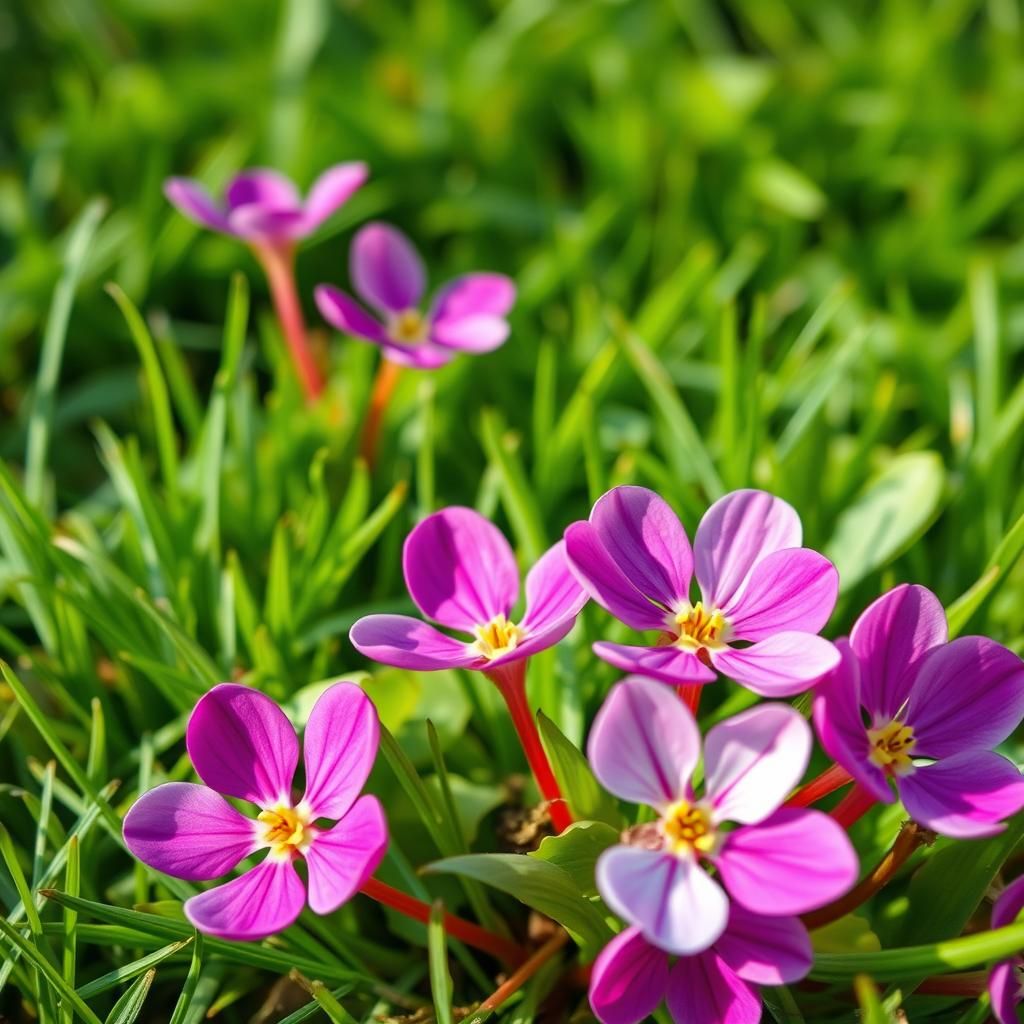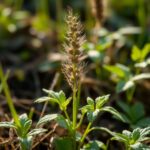Effective Strategies: What Kills Oxalis But Not Grass for a Healthy Lawn

Maintaining a healthy lawn often requires battling invasive weeds, with oxalis being a notorious adversary. This resilient plant can quickly overtake grass, creating an uneven and unsightly lawn. However, the challenge lies in effectively eliminating oxalis without harming the grass itself. Understanding the biology of oxalis and employing targeted strategies is essential for lawn care enthusiasts. In this article, we will explore effective methods that selectively kill oxalis while preserving the lush greenery of your lawn. From proper cultural practices to natural remedies and selective herbicides, these strategies will help you achieve a vibrant, healthy landscape free of unwanted weeds.
Effective Treatments for Oxalis Without Harming Grass
To control oxalis, which is often considered a weed, it is crucial to choose methods that do not adversely affect grass. One effective approach is the use of targeted herbicides that specifically target broadleaf weeds like oxalis while being safe for grassy lawns. Additionally, cultural practices such as improving soil health, promoting dense grass growth, and proper lawn maintenance can help create conditions that discourage oxalis proliferation without harming the surrounding grass.
Understanding Oxalis Growth Habits
The growth habits of oxalis vary depending on the species, but they generally proliferate in moist, nutrient-rich environments. These plants can spread via seed and tubers, allowing them to establish dense colonies. By understanding their growth cycle and preferred conditions, you can better time your treatment strategies to target them effectively while preserving the health of your grass.
Selective Herbicides for Weed Control
When looking for solutions to eliminate oxalis without damaging grass, selective herbicides are often recommended. These herbicides work by targeting broadleaf plants while sparing grasses. Products containing ingredients like 2,4-D or dicamba are examples of selective herbicides that can effectively kill oxalis. Always follow label instructions to ensure the safe application and to protect your lawn.
Cultural Practices That Prevent Oxalis Growth
Implementing certain cultural practices can significantly help in managing oxalis populations in your lawn. Regularly mowing your grass at the appropriate height can promote healthy growth, which helps shade and outcompete oxalis. Additionally, maintaining proper soil fertility and moisture levels encourages robust grass that can resist weed invasions.
See also:
Organic Alternatives for Oxalis Management
If you prefer organic methods, options like boiling water or vinegar can kill oxalis plants without harming the grass. When applied directly to the leaves, these substances cause the plant to wilt. However, care must be taken to avoid overlapping onto desirable grass, as they can also cause damage. Using a targeted approach allows for effective management of oxalis while keeping your lawn intact.
Monitoring and Maintenance: Key to Success
Regular monitoring of your lawn is essential for early detection of oxalis infestations. By keeping a close eye on your lawn and addressing small populations before they spread, you can minimize their impact significantly. Incorporate regular maintenance practices such as aeration and overseeding, which can foster a strong grass root system and reduce the likelihood of oxalis taking hold.
| Method | Effectiveness | Grass Safety |
|---|---|---|
| Selective Herbicides | High | Safe |
| Cultural Practices | Moderate | Very Safe |
| Organic Alternatives | Variable | Risky |
Understanding the Biology of Oxalis for Targeted Control
The biology of Oxalis, often referred to as woodsorrel, is crucial to implementing effective control methods without harming the surrounding grass. Oxalis typically spreads through bulbs and seeds, making it a resilient weed in many lawns. By understanding its life cycle and growth habits, such as its preference for moist and well-aerated soil, lawn care enthusiasts can apply targeted treatments that disrupt Oxalis while leaving desirable grasses unharmed. Consideration of appropriate timing, such as applying treatments during active growth, can enhance the efficacy of any strategy employed against this invasive plant.
Selective Herbicides for Oxalis Control
Selective herbicides are designed to target specific weeds like Oxalis while sparing desired grass types. These products exploit differences in foliar structure and growth habits between the weed and the turf, allowing for effective management. By applying these herbicides during the optimal time, typically in early spring or late fall when Oxalis is actively growing, homeowners can efficiently reduce its population without compromising the health of their lawn.
Natural Remedies to Combat Oxalis
For those seeking organic options, natural remedies may provide an effective solution for managing Oxalis. Ingredients like vinegar or boiling water can create a hostile environment for the weed. However, careful application is crucial, as these methods can affect surrounding grasses as well if not applied correctly. These approaches often serve as a short-term measure while establishing a long-term lawn care strategy that includes proper fertilization and lawn maintenance.
See also:
Improving Lawn Health to Outcompete Oxalis
Promoting overall lawn health is a fundamental strategy in naturally reducing the presence of Oxalis. Practices such as regular aeration, appropriate watering, and balanced fertilization can enhance grass vigor, allowing it to outcompete weeds. A thick, healthy lawn is less susceptible to invasion, and maintaining the proper mowing height can also reduce light availability to Oxalis, thwarting its growth.
Timing Your Treatments for Maximum Effectiveness
The timing of treatments is a critical factor in managing Oxalis effectively. Applying herbicides during specific growth stages, such as early spring when the weed is just emerging, allows for better absorption and effectiveness. Conversely, treating in hot, dry conditions may lead to ineffective results. Understanding the seasonal patterns of Oxalis and planning treatments accordingly can significantly enhance control efforts.
Regular Lawn Maintenance Practices
Integrating regular maintenance practices is vital for sustained lawn health and effective Oxalis management. This includes maintaining an optimal mowing schedule, ensuring proper irrigation to avoid over or under-watering, and keeping an eye out for early signs of weed infestation. By adhering to a consistent maintenance routine, homeowners can not only address existing issues with Oxalis but also prevent future infestations from taking root in the lawn.
Questions from Our Readers
What are effective methods to kill oxalis without harming grass?
To effectively kill oxalis while protecting grass, consider using selective herbicides that target broadleaf plants. These herbicides typically contain active ingredients like triclopyr or dicamba, which are designed to eliminate oxalis without affecting the grass species. Always follow the instructions on the label to ensure safe application.
Can vinegar be used to kill oxalis without affecting grass?
Yes, vinegar, particularly its higher concentrations, can be an effective natural herbicide for killing oxalis; however, it is crucial to apply it carefully. Since vinegar is a non-selective herbicide, it can harm grass if not applied directly onto the oxalis leaves. To minimize damage, apply it on a sunny day when the grass is not wet.
See also:
Is hand pulling an effective way to control oxalis in grass areas?
Hand pulling can be an effective way to control oxalis, especially when the soil is moist, making it easier to remove the entire root system. However, this method requires diligence, as it is important to ensure that no remnants of oxalis are left behind, as they can regenerate. Regular maintenance is also necessary to keep oxalis from returning.
What should I avoid when trying to kill oxalis without harming grass?
When attempting to kill oxalis without harming grass, avoid using non-selective herbicides such as glyphosate, as they will kill any plant they come into contact with, including your grass. Additionally, be cautious with any treatments during warm weather as the heat can stress the grass, making it more susceptible to damage from herbicides or other treatments.
![How to Get Rid of Oxalis (Woodsorrel: small yellow flowers in lawns) [Weed Management] hqdefault](https://i.ytimg.com/vi/JJMWrIg7DFs/hqdefault.jpg)
If you want to read more articles like Effective Strategies: What Kills Oxalis But Not Grass for a Healthy Lawn, we recommend you check out our Weeds category.
Leave a Reply
Related Articles